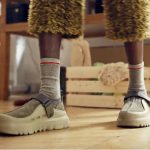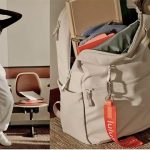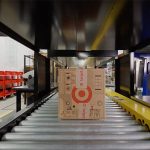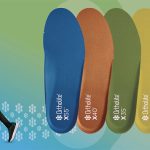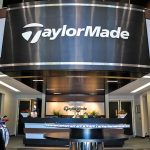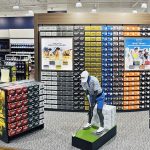Newell Brands’ Outdoor and Recreation segment reported an 18.4 percent decline in core sales due to a shift of retailer orders into the first half and softening demand. Newell officials also said they expect the recent pandemic-related benefits to “continue to subside” for its outdoors and home businesses.
Overall, the company slightly reduced its outlook for 2022 as third-quarter results decelerated due to the impact of elevated inventory levels in the marketplace and inflationary pressures.
The stronger dollar also impacted Newell’s third-quarter results, and other businesses outside the Outdoor and Recreation segment also felt the impact of sales shifting from the third quarter in the first half. Newell had already lowered its third quarter and full-year outlook on September 6.
“Going forward, we expect demand patterns to continue to be unfavorably impacted by inflationary pressure on the consumer, which has constrained discretionary spending, particularly for value-driven shoppers,” said Ravi Saligram, Newell Brands’ CEO, on a call with analysts. “In some categories, such as home fragrance, we have lost low-income shoppers, who were only able to enter the category last year due to the boost from government stimulus. We expect some pandemic-related trends that elevated demand to continue to subside.”
Looking to 2023, Chris Peterson, president and CFO, said Newell expects consumers’ disposable spending power to remain under significant pressure due to inflation in food, housing and energy. He added, “We expect continued normalization of home and outdoor categories from COVID-peak demand levels, and we expect retailers to plan open to buy dollars for general merchandise categories conservatively as we likely move into a more recessionary environment.”
Newell Brands Outdoor & Recreation segment includes Campingaz, Coleman, Contigo, ExOfficio and Marmot. Its other brands include Rubbermaid, FoodSaver, Calphalon, Sistema, Sharpie, Paper Mate, Dymo, EXPO, Elmer’s, Yankee Candle, Graco, NUK, Rubbermaid Commercial Products, Spontex, Oster, Sunbeam, and Mr. Coffee.
The 18.4 percent decline in core sales in the Outdoor & Recreation segment follows gains of 2.5 percent in the second quarter and 22.9 percent in the first.
Net sales, including certain low-margin categories it exited, and unfavorable foreign exchange in the Outdoor & Recreation segment, fell 26.1 percent in the quarter to $289 million from $391 million a year ago. Reported operating income at the Outdoor & Recreation segment fell 70.4 percent to $8 million from $27 million a year ago. Normalized operating income was down 47.1 percent to $18 million, or 6.2 percent of sales, compared with $34 million, or 8.7 percent, in the prior year period.
Companywide, sales in the quarter fell 19.2 percent to $2.3 billion, including the year-over-year impact from the sale of its Connected Home & Security (CH&S) business at the end of the first quarter in 2022. Sales were marginally better than the consensus estimate of $2.25 billion. Core sales declined 10.8 percent compared with the prior year period. Reported EPS declined to 7 cents a share compared with 44 cents in the prior-year period. Normalized EPS came to 53 cents compared with 54 cents in the prior year period and topped analyst’s consensus target of 46 cents.
Saligram core sales declined year-over-year in all business units, except the Commercial Solutions business, as the pullback in customer orders was a significant headwind. Core sales outside North America declined 1.4 percent as Newell did not experience the same level of retailer inventory reductions overseas as in North America. Growth of 4.8 percent in Latin America was offset by declines in EMEA and Asia-Pacific.
“Due to concerns about the high price of everyday goods and gas, a potential recession, rising interest rates, and declining personal savings rate, we see a more cautious consumer today but one willing to purchase an offering that provides good value,” said Saligram.
As a result, Newell has been realigning its product assortment to ensure it supports a strong value proposition. The company has also created shopper campaigns to emphasize its value messaging. Nevertheless, Saligram said that given the macroeconomic backdrop and expected external disruptions, Newell plans for a recessionary environment in 2023 with a softer top line. He said, “We are acting with speed and agility as we adjust our playbook to this environment while taking actions that are within our control to maximize profits and cash.”
Saligram said Newell’s top five priorities include:
- Accelerating cash flow generation by significantly right-sizing the company’s inventories (inventories were at $2.53 billion at the quarter’s end, up from $2.0 billion at the start of the year);
- Driving a recovery in gross margins focused on enhancing productivity and through pricing actions internationally to reduce foreign exchange headwinds;
- Reducing overhead in the U.S. and internationally by closely managing discretionary expenses and optimizing advertising and promotional spending, including the company’s office footprint;
- Redirecting investment towards higher margin businesses; and
- Accelerating SKU rationalization and supply-chain transformation to reduce complexity.
Said Saligram, “While maintaining the long-term focus, our ultimate goal is to position the company to come out even stronger as the macros improve.”
Newell’s updated outlook for 2022 calls for:
- Sales in the range of $9.35 to $9.43 billion ($9.37 billion to $9.58 billion previously);
- Core sales to show a 3 percent to 4 percent decline (2 percent to 4 percent decline previously);
- Normalized operating margin in the range of 10.0 percent to 10.3 percent (10.0 percent to 10.5 percent previously); and
- Normalized EPS in the range of $1.56 to $1.61 (previously $1.56 to $1.70).
For the fourth quarter, sales are expected in the range of $2.18 billion to $2.26 billion, core sales are projected to show a 9 percent to 12 percent decline, normalized operating margin to be in the range of 5.1 percent to 6.5 percent (11.4 percent a year ago), and normalized EPS to be in the range of 9 cents to 14 cents (42 cents a year ago).
Photo courtesy Newell Brands/Coleman





